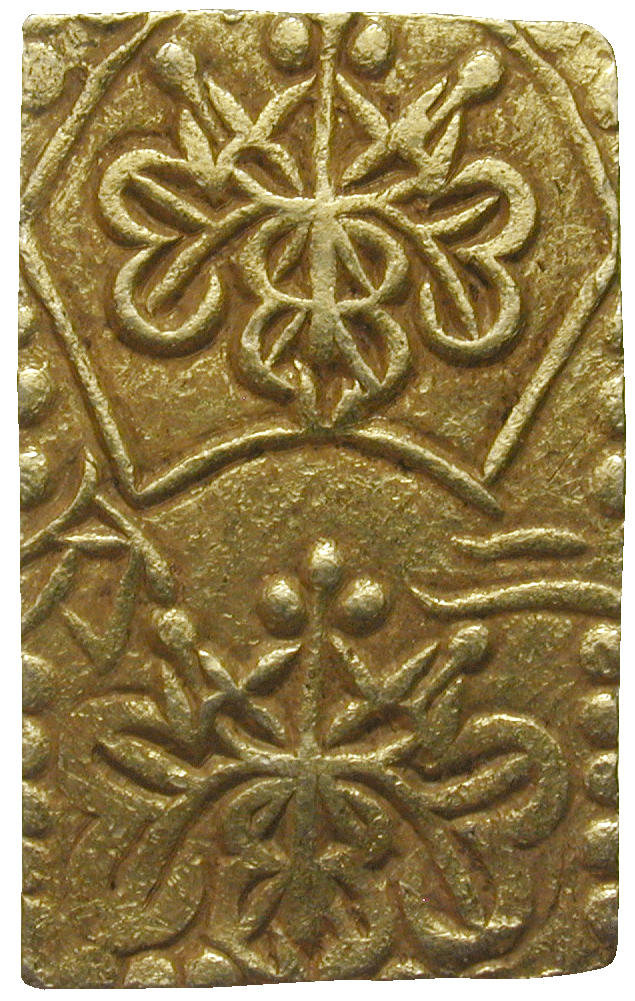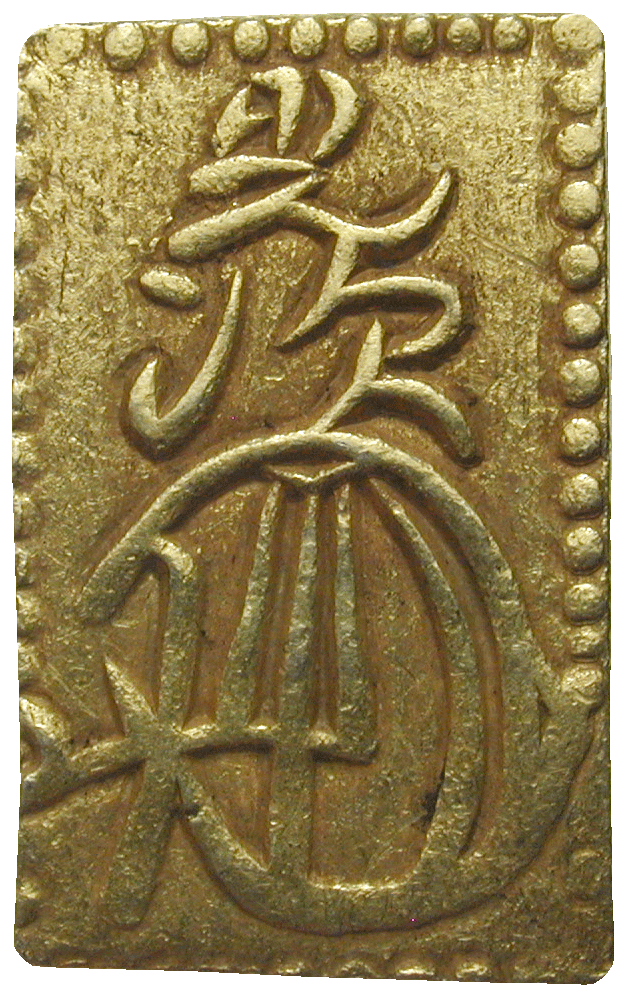Die Vorderseite dieses japanischen Nibukin trägt zwei Blüten der Kaiserlichen Paulownie. Die beiden Schriftzeichen in der Mitte der Münze verraten ihren Wert Ni (= zwei) Bu. Die obere Hälfte der Rückseite gibt in chinesischen Schriftzeichen von oben nach unten gelesen die Inschrift «Mitsu Tsugu» wieder, den Namen des Leiters des Goldmünzamtes. Das grosse Schriftzeichen in der unteren Hälfte zeigt die Unterschrift dieses Herrn. Die traditionellen japanischen Gold- und Silbermünzen waren in der alten Währungseinheit Ryo bewertet. Der Ryo war in Bu und Shu unterteilt; es galt: 1 Ryo = 4 Bu = 16 Shu. Silbermünzen gab es im Wert von einem Bu (Ichibugin) und einem Shu (Isshugin). Die Goldmünzen galten 2 Bu (Ni Bu).
Ausgabejahr
ca. 1868 n. Chr.

